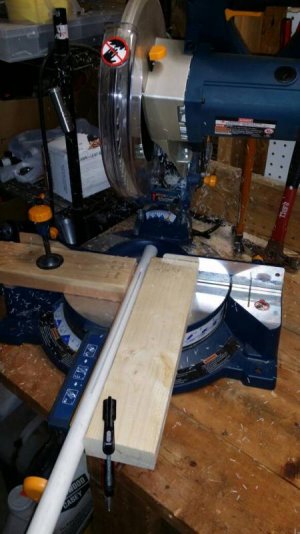Floyd R Turbo
Either busy or sleeping
The feeding guideline was introduced by SM about 6 months prior to the unveiling of his UAS concept, but essentially was arrived at I believe due to the anecdotal evidence that supported it.
Since then he (recently) has backtracked and made up a new guideline based on tank conditions and the whole "phosphate leeching" theory but my opinion is that this, like any guideline, does not hold true for all devices and conditions.
If you build one optimally, I can tell you that the 12 sqin/cube/day guideline is pretty good. You can double the size (and lighting) and still get good growth/filtration, but beyond that your growth tends to thin out.
One factor is lighting. Up until around the time of the feeding guideline, LED wasn't really "solid". Now it is on more solid ground, but there are still limits to be found. I've found that initially you need a much lower level of LED light for the maturing stage (too much actually slows the process) but then after you have an established screen you can increase light intensity and photoperiod in concert with flow rate and you end up with a wide range of filtration capacity. So if you start out with 9hrs/day at 1/2 power, then after maturing you can bump up the length of the photoperiod with the same flow and extend the filtration time. When you hit an upper limit on time or your growth starts to be too "dense" (but green) then you can increase the intensity and back off the photoperiod. Now you have an option to further extend the photoperiod should the shorter but more intense cycle still not cut it.
The bottom line is that the guideline is meant to get you in the ballpark, and in most cases, it takes care of things pretty well. IMO the "tank conditions" guideline is not written for or appropriate for waterfall scrubbers. There really needs to be 2 guidelines because waterfall and UAS devices are inherently very different in forum, function, and results.
Since then he (recently) has backtracked and made up a new guideline based on tank conditions and the whole "phosphate leeching" theory but my opinion is that this, like any guideline, does not hold true for all devices and conditions.
If you build one optimally, I can tell you that the 12 sqin/cube/day guideline is pretty good. You can double the size (and lighting) and still get good growth/filtration, but beyond that your growth tends to thin out.
One factor is lighting. Up until around the time of the feeding guideline, LED wasn't really "solid". Now it is on more solid ground, but there are still limits to be found. I've found that initially you need a much lower level of LED light for the maturing stage (too much actually slows the process) but then after you have an established screen you can increase light intensity and photoperiod in concert with flow rate and you end up with a wide range of filtration capacity. So if you start out with 9hrs/day at 1/2 power, then after maturing you can bump up the length of the photoperiod with the same flow and extend the filtration time. When you hit an upper limit on time or your growth starts to be too "dense" (but green) then you can increase the intensity and back off the photoperiod. Now you have an option to further extend the photoperiod should the shorter but more intense cycle still not cut it.
The bottom line is that the guideline is meant to get you in the ballpark, and in most cases, it takes care of things pretty well. IMO the "tank conditions" guideline is not written for or appropriate for waterfall scrubbers. There really needs to be 2 guidelines because waterfall and UAS devices are inherently very different in forum, function, and results.




